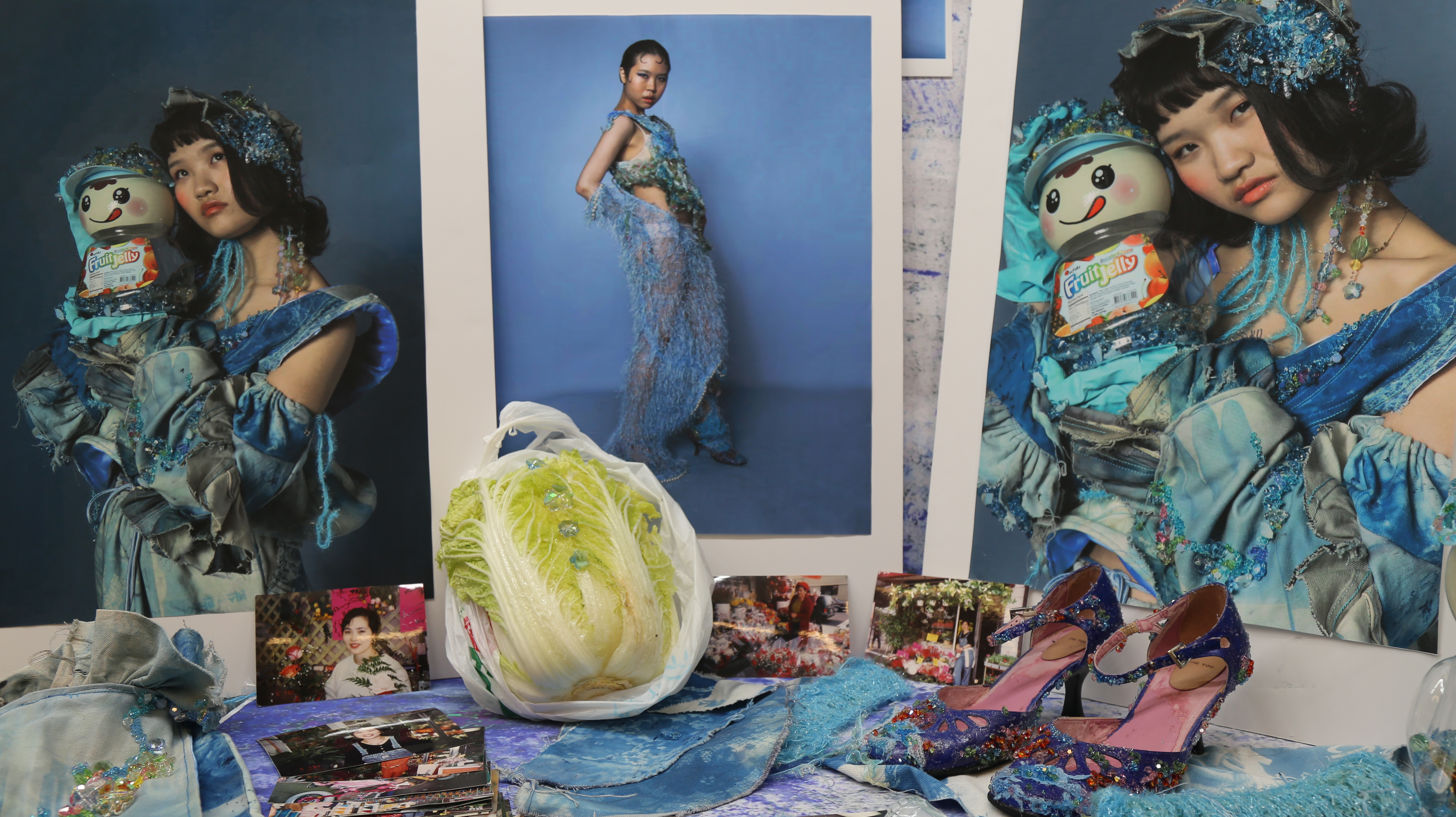Parsons School of Fashion held Open Students for Bachelors of Fine Arts (BFA) fashion students in their second and third years from Dec. 10 to 16. Open Studios are presentations that give fashion design students the opportunity to showcase their work over an entire semester.
Jiayi Che is a second-year fashion design student at Parsons. This was her first time showcasing her work through the Open Studios. Che said that she’s proud of all the work she’s done this semester. Although she admits her early work isn’t up to her current standards, “Sometimes you look back at your old stuff and you think it’s bad. But, really, that shows progress.”
Che displayed garments she’s made over the course of the semester, including fabric she weaved by hand. She also presented photographs of her clothes, mostly modeled by her friends. Che’s friends play a big role in her time at Parsons. Not only do they model her clothes, but they also came to open studios to support her. “I feel really flattered that people are coming to see my clothes, most of them are my friends,” Che said. Che often shares her work on her social media pages.
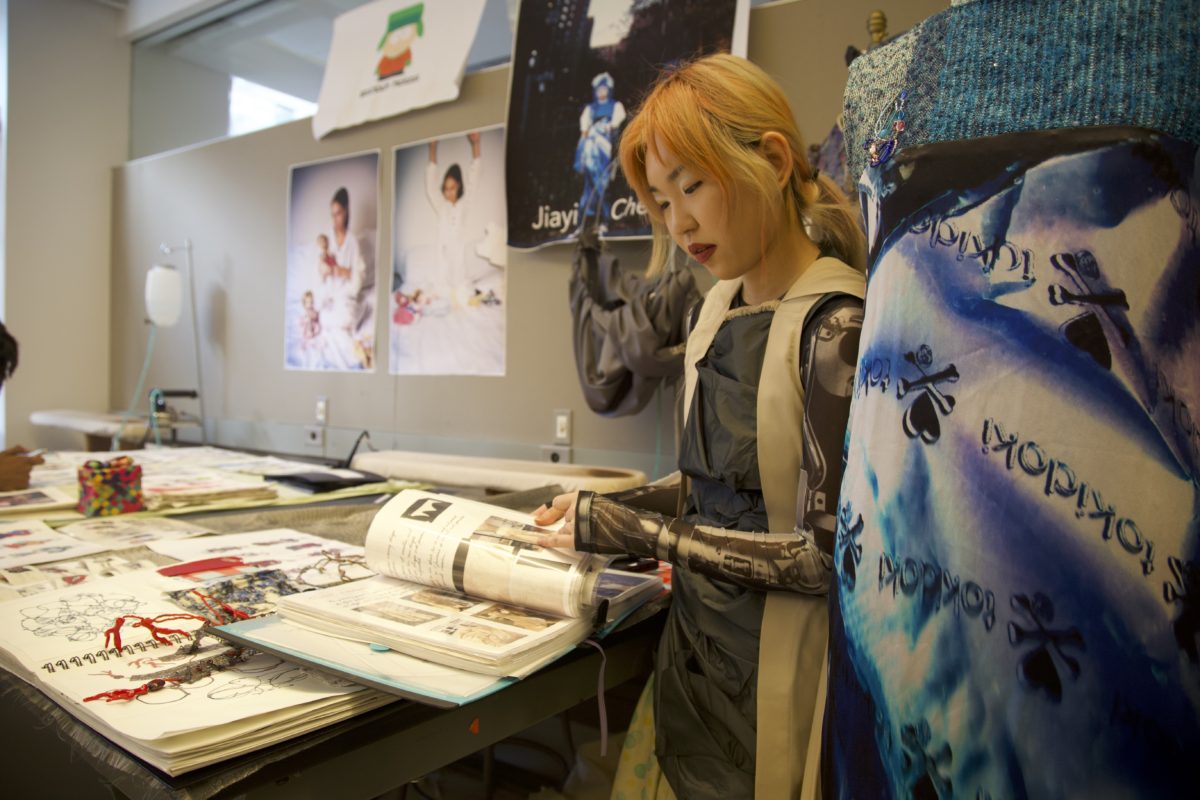
Jay Jielong Jiang, a third-year fashion design student at Parsons, said his collection was inspired by his relationship with his mother. He experimented with other materials alongside knitting to play with different perspectives of his relationship. “Knit is a soft material, but you can use other materials and make it really tough,” Jiang said. “It reminds me of my mother because she had to be strong to protect her children.”
Jiang also explained why he chose knit as opposed to other materials for the project he presented. “There’s a Chinese saying that ‘one chopstick is easy to break, but 100 makes it really strong and unbreakable,’” Jiang said. “I feel like knitting works that way because each loop I create is individually fragile, but the stitches come together really strong in the end.” In addition, Jiang was inspired by sustainability classes at Parsons and used only recycled materials. Jing used upcycled Swarovski crystals in partnership with the United Nations, plastic pipes donated by his friends, and recycled fabrics from The New School. “We can create meaningful artwork even through recycled materials and it’s important to encourage this practice,” Jiang said.
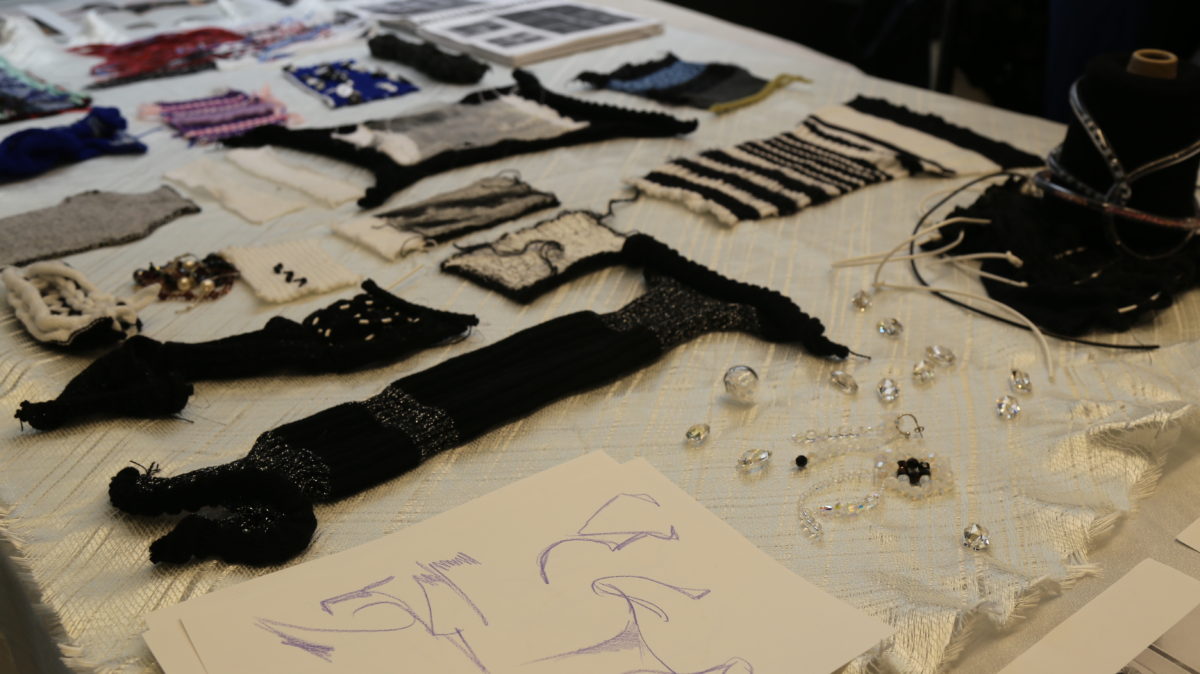
Alice Seju Kim, a third-year fashion design student at Parsons, also derived inspiration from her relationship with her mother, especially through their shared love of food. “I zoomed into a photo of the dumpling and was inspired by the crunches and shape of it,” Kim said. Kim used biodegradable fabrics and sun dyeing as opposed to other traditional processes. “It’s important because we use so much single-use plastics,” Kim said. “We’re not permanent humans so why not make clothes that way as well?”
Cooper Treuhaft, a third-year fashion design student, said he was inspired by horror movies for his collection. “I’m obsessed with horror movies because it helps me come to terms with what makes me uncomfortable,” Treuhaft said. For his collection, Treuhaft externalized traumatic feelings and personified all of his looks like members of a family. “For example, Sally’s jacket is intimacy anxiety,” Treuhaft explained. “The jacket is soft and fuzzy and makes you wanna touch it, but pins make you pull back.” His pieces reflect his personal experiences but also can be relatable for anyone who views it. Treuhaft used recycled and upcycled materials from school, recycling centers, and donations. “Using old fabrics is how I first got into fashion,” Treuhaft said. “I would go around my house and find old clothes. It’s cheap and convenient.”
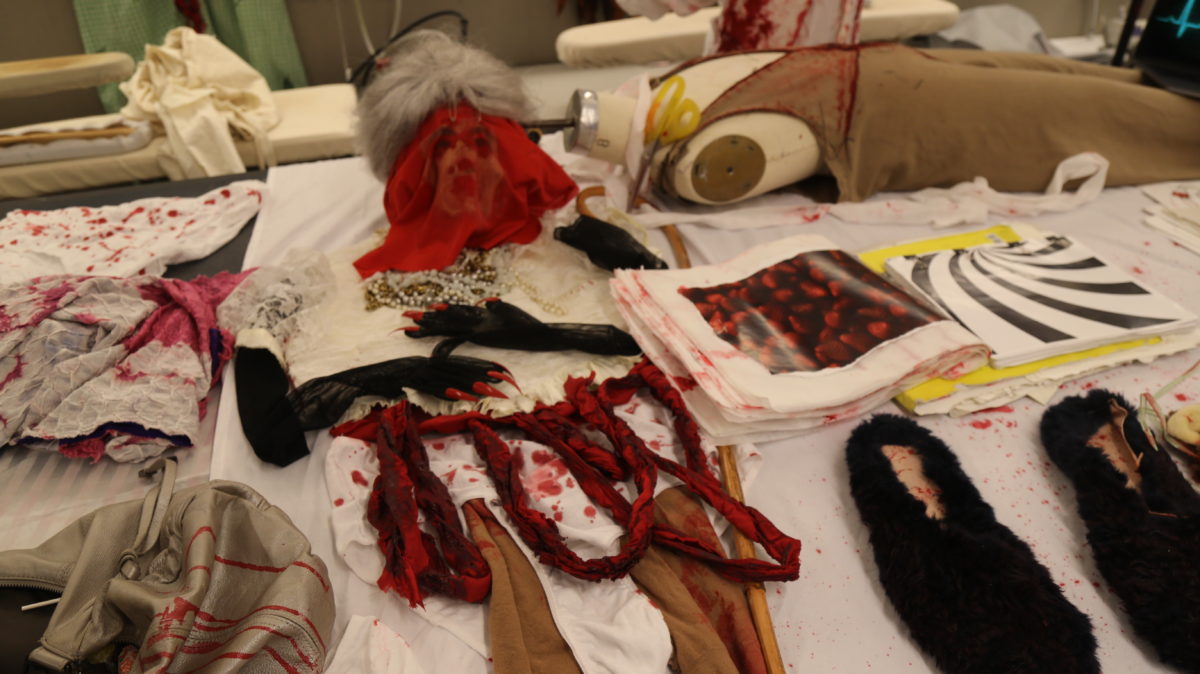
Ryu Noguchi is a second-year fashion design student at Parsons. Noguchi was inspired by 1980s punk scenes and integrated elements of Japanese culture into his collection. Noguchi noted that he used natural dyes for his pieces. “Sustainability is important in my design process because it’s easy to destroy and recreate pieces and make them unique,” Noguchi said. After graduating, Noguchi wants to establish his own brand, but not without gaining experience from internships first. “If I have no techniques, I can’t express myself so that’s why I’m learning,” Noguchi said.
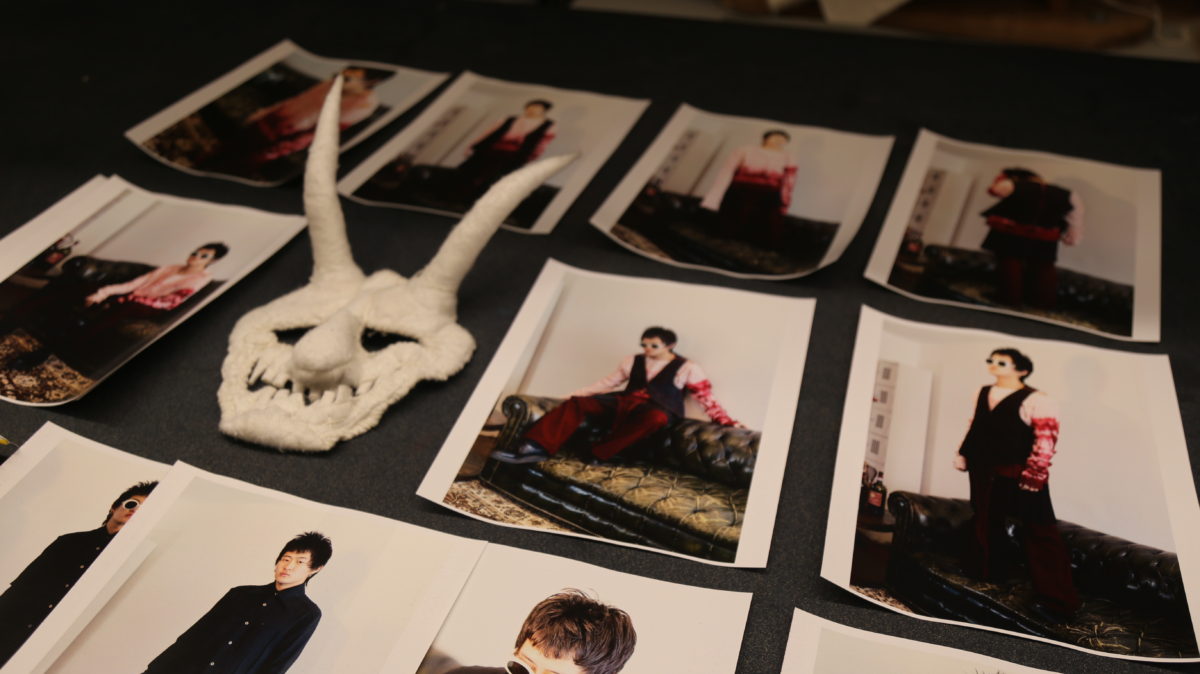
From gelatin to upcycled Swarovski crystals, fashion design students at Parsons are attempting to challenge what some people consider to be fashionable, starting with the design process itself. As seen at this semester’s Open Studios presentations, students are incorporating everything from sustainable methods to integrating their own culture into their pieces.







